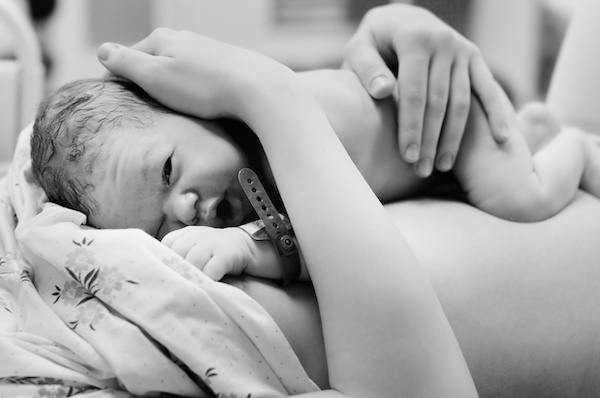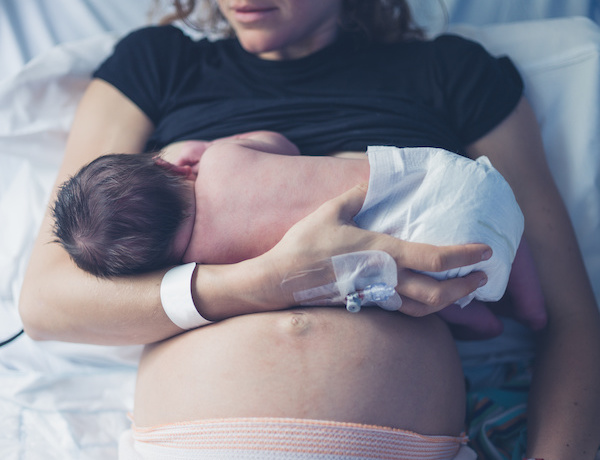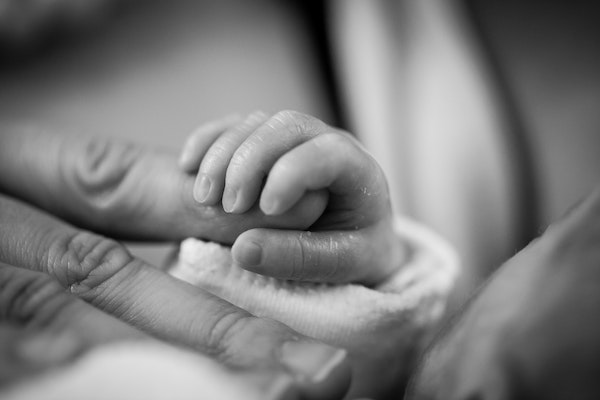A loving human touch has been found to pack an amazing healing power capable of easing pain and minimizing depression. Interestingly, teams that hug have also been found to have notably higher chances of winning.
But the importance of touch goes way beyond these scenarios. Lots of research reports now prove that maternal touch is what newborns require first thing after birth.
While breastfeeding is critical too, it’s the initial loving and caring touch and the very first uninterrupted moments spent with the mother that lay the foundation for a successful breastfeeding regimen.
In a bid to understand why infant mortality rate was so high in some orphanages, researchers discovered that babies that aren’t hugged and nuzzled enough literally stop growing and eventually die even on a proper diet.
And that’s to say that touch not only impacts short-term development, but its effects continue to manifest themselves in the long-term.
| Today, the World Health Organization as well as the United Nations Children’s Fund advocate for healthy mothers and babies to have an uninterrupted skin-to-skin contact immediately after childbirth for at least an hour. |
Skin-to-skin contact in this context refers to placing the dried baby on the mother’s bare chest while covering the child’s back with something light and warm, for instance, a blanket or towel.

Holding The Baby After Birth & Its Outcomes
There are lots of studies that have been done to determine the importance of keeping mother and baby together after childbirth and the effect of this on bonding.
This study carried out in Queensland, Australia is, however, the most commonly referenced perhaps due to its large sample.
The aim of this study was to determine:
- Timing (how soon the contact between mother and baby should be made after birth)
- Type of first hold
- Duration of the contact
- Impacts of the contact to the infant and mother
The respondents in this study comprised of 4574 mothers who had either a singleton or multiple births. This sample mainly consisted of women above 20 years and most of whom had given birth in private facilities.
It also had a fair representation of most of the aspects that previous studies deemed paramount including mode of birth (assisted or unassisted vaginal birth; assisted, planned cesarean section, and unplanned cesarean section), a plurality of pregnancy, infant gestational age, and birthweight.
This sample excluded moms who had either been taken to an Intensive Care Unit immediately after childbirth or had their babies taken care of in a neonatal unit.
Data from the respondents was collected using a questionnaire that had details regarding the baby, pregnancy, labor, birth, postnatal care, and reproductive history.
Among other variables in the questionnaire, the respondents were required to indicate how soon they were able to hold the baby (the response options ranged from as soon as under 1 minute to more than 1 day after birth) and whether or not they had a skin-to-skin contact.
The answers to this question would later help in interpreting another very important variable that assessed the health and wellbeing of the mother. This variable used a 5-point Likert scale ranging from ‘not at all well’ to ‘’very well’’.
The questionnaire also required the women to indicate whether the babies ever had breastmilk, whether they were still breastfeeding when being discharged from the hospital, and whether they were still having breastmilk by the time of the survey.
In addition, the women were asked to indicate how confident they were when leaving the hospital. Lastly, another variable assessed whether the moms ever felt depressed or anxious (worried) after their recent birth.
| If you’d like to read more about scientific research on pregnancy or check my reviews of baby gear go to https://www.littlebabygear.com and browse around! |
Results
The first thing that was evident after analyzing the results was that the timing and duration of initial mother-infant contact varied significantly depending on the mode of birth.
- 97% of those who had an unassisted vaginal birth reported having held their baby 5 minutes after birth. Of these, 94% had skin-to-skin contact and 64% of them had an initial contact that lasted longer than 20 minutes.
- Of those who had assisted vaginal birth, 90% were able to hold their babies within 5 minutes, 89% had skin-to-skin contact, and only 46% of them were able to hold the baby for longer than 20 minutes.
- For moms who underwent a cesarean section, only 67% were able to hold their baby within the first 5 minutes of giving birth, 49% held their baby skin to skin, and only 33% held the baby for a period longer than 20 minutes.
As expected, women who had an unassisted vaginal birth were more satisfied with the timing and duration of the first hold than those who went through other modes of birth.
In addition, those who held the babies within the first 5 minutes had a higher satisfaction rate than those who held the baby later than 5 minutes after birth.
An important revelation that the study made was that while mothers who held their baby within 5 minutes after birth had a higher chance of having skin-to-skin contact, their odds of holding the baby for longer than 20 minutes was lower compared to those who held the baby later than after 5 minutes.

Impact of initial contact
The timing of the initial contact was found to have a significant impact on breastfeeding. Regardless of the mode of birth (vaginal or CS), breastfeeding initiation was high at 97% and 96% respectively. Breastfeeding at the time of discharge was recorded at 94% and 92% but the numbers declined at 13 weeks (77% and 69%).
Mothers who had a vaginal birth and who held their baby 5 minutes after birth had a higher chance of breastfeeding almost immediately and even during discharge although there wasn’t a significant difference at around 3 months.
Importantly, these women reported to have felt ‘very well’ during the first few days, had higher levels of confidence after discharge, and were less likely to fall into depression or feel anxious.
Women who had a longer initial contact also reported a higher rate of ever breastfeeding and being able to breastfeed during discharge. But there was no significant difference 3 months after childbirth. This group also reported having felt ‘very well’ in the first few days.
Notably, mothers who had skin-to-skin contact showed a higher chance of ever breastfeeding and breastfeeding during discharge. These women also had positive reports regarding their physical and emotional health and were also less likely to develop depression or anxiety since birth.
For women who delivered through cesarean section, this study did not identify any association between type of initial contact, timing, and duration and breastfeeding and maternal wellbeing.
However, among those who had unplanned CS, the mothers who held their baby within 5 minutes after birth had a higher chance of breastfeeding by the time of discharge and even at 3 months compared to those who held the baby for the first time later.
The duration of the initial contact also had a notable impact on breastfeeding. Regardless of the mode of delivery, the researchers found out that women who held the baby for 31-60 minutes or more had a higher chance of breastfeeding at the time of discharge and even after 3 months than those who held the baby for 11-20 minutes only.
Discussion
It’s evident from the results above that having an early contact with the baby has a significant impact on the breastfeeding behavior and general wellbeing of the mother more so if the contact is skin-to-skin.
It is also clear that what matters most is not only the type of contact but its timing and duration too. The results showed that mothers who held their baby within the first 5 minutes and those who held them for long were more likely to have successful breastfeeding.
These aspects also tend to have a hand in the mothers’ wellbeing and good maternal postpartum health 4 months after giving birth.
This study also reveals that the impacts of contact, duration, and timing on breastfeeding and maternal postpartum health also vary greatly depending on the type of delivery. Precisely, there was a significant association between all the aspects above for mothers who had virginal birth.
On the other hand, there was barely any association between contact, timing, and duration and maternal postpartum health and breastfeeding for mothers who birthed through planned cesarean section.
Understanding The Science Behind Skin-To-Skin Contact And Staying Together
Having understood the significance of skin-to-skin contact between mother and baby immediately after birth, you may wonder what exactly causes the association between type of contact, timing, and duration and breastfeeding and maternal health. The simplest answer to this query is bonding.
According to Bergman, a public health physician who’ve studied the importance of skin-to-skin care and cited in this article in the Journal of National Institutes of Health, what an infant requires during the first hour after birth is the mother only.
Experts have dubbed this the magical, golden, or sacred hour. They say that this hour is characterized by high levels of oxytocin- a maternal reproductive hormone which crosses from the mother to the baby through the placenta, and which is responsible for promoting mother-infant bonding. It also helps the newborn to transition into its new life with ease thereby reducing maternal and newborn stress.
- Disrupting or delaying skin-to-skin contact has been found to lead to:
- Breastfeeding and self-attachment difficulties
- Disturbed maternal-infant bonding
- Reduced mother’s affective response to the baby

Benefits Of Keeping Mother And Baby Together After Childbirth
Now we will discuss the positive effects of mother-baby contact right after the birth.
It Promotes Bonding
This is by far the key benefit of this arrangement. Naturally, the mother and infant are programmed to connect intensely after birth.
At this early stage, though, the only way through which the baby can bond is through touch and smell. The good thing is that their touch and smell senses are usually at high alert at this time to respond to your natural scent and the feel of your skin.
For the mother, holding the baby against her bare chest increases the release of oxytocin- the birth hormone that causes the uterus to contract. The influx of this hormone in her system also triggers mothering feelings as she touches and gazes at the baby.
It Reduces Stress In Both Parties
All along, the womb has been the only habitat that the baby has ever known since conception. The baby is firmly attached to it to the point that it gets stressed when it’s birthed to a new strange new world. By placing the baby on mom’s bare chest, the baby feels the heartbeat that it has been used to and this promotes an easy transition.
This actually explains why babies who experienced a skin-to-skin contact soon after birth tend to cry less than those who were separated due to various reasons. The reason for this is that the babies feel the security offered by the mother and they also attach to her quickly.
On the other hand, when holding the baby after birth, the mother’s brain releases beta-endorphin. This is a hormone that helps her to feel good by blocking the sensation of pain. It also helps the mom to respond to the baby and it goes ahead to reinforce the interaction between the two.
It Promotes Successful Breastfeeding
Lots of studies have proved a solid link between early skin-to-skin contact and exclusive breastfeeding at the hospital and even long after hospital discharge. Researchers explain that skin-to-skin contact awakens breastfeeding reflexes and, therefore, recommend it as one of the best strategies that could promote exclusive breastfeeding.
Following this evidence, most hospitals today are adopting the policy ‘’weight can wait’’ to ensure that the baby has an immediate, uninterrupted skin-to-skin maternal care immediately after birth.
Stabilizes Baby’s Vitals
Skin-to-skin contact has also been found to be an important tool for enhanced cardio-respiratory stability for the baby. These babies have been found to exhibit more stable blood glucose and oxygen saturation levels. This is because by placing the baby on the bare chest, its heartbeat rhythm is synced to that of the mother to within milliseconds.
The skin of the mother also helps in regulating the temperature of the baby thereby preventing the risk of neonatal hypothermia- this is when the baby loses more heat that it is actually generating. This means that the baby’s heat is channeled to other vital functions other than regulating their body temperature.
Final Words: Not Carved In Stone
Most of the studies that have been carried out around this issue confirm that early and prolonged skin-to-skin contact has tremendous impacts on the development of the baby, and wellbeing of the mother.
However, it’s also important to understand to keep in mind that early separation may be necessary. For instance, in the context of a serious health problem that necessitates immediate admission of the baby or mother to a neonatal or intensive care unit, being adamant on keeping the mom and baby together isn’t exactly in their best interest.
Bibliography:
Please keep in mind that this article IS NOT a medical advice. The purpose of this article is informative and it should NOT be used as a substitute for consultation with a doctor. Always consult your health concerns and decisions with your doctor.

